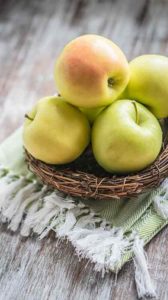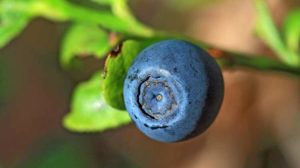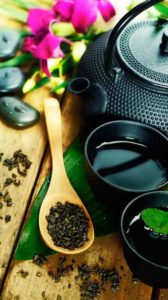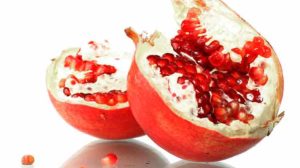 Oxygen is very necessary to live, everyone knows that, but in a way it is also what might kill us in the end. For people who die of old age, oxygen may very well be the real culprit, because the damage that every breath of the stuff causes over a lifetime could actually cumulate enough to the point that our last breath is quite literally the thing that finishes us off.
Oxygen is very necessary to live, everyone knows that, but in a way it is also what might kill us in the end. For people who die of old age, oxygen may very well be the real culprit, because the damage that every breath of the stuff causes over a lifetime could actually cumulate enough to the point that our last breath is quite literally the thing that finishes us off.
The free radicals that are the result of a small percentage of the oxygen we take in every time we inhale are particularly aggressive. They damage other cells and cause general havoc that can lead to cancer, heart disease and mental degradation. And yes, as mentioned already, they could even be a large contributor to ageing.
What a way to start an article about health!!! There is plenty of good news coming though, so fear not. Certain compounds in foods can roam our blood stream and clean out these free radicals before they do too much damage. These microscopic heroes are called antioxidants.
Antioxidant is a term that is brandished quite loosely in today’s society, and the general consensus seems to be that anything associated with them should be consumed immediately, no questions asked. People don’t need an explanation when it comes to healthy stuff – just eat or drink it because anti-oxidant = good…right?
Well, there’s a little more to it than that, unfortunately. With antioxidants, like everything in life it seems, there’s two sides to the story.
Antioxidants – Free Radical Assassins
This pervasive good-guy complex we have about antioxidants is justly deserved for many reasons. The type we synthesize ourselves naturally, plus the fruits and vegetables that contain other types are of utmost importance to our health, and there is a huge case for them being nominees for the lifetime award for heart-disease-dementia-cancer prevention.
Oxygen is a very reactive molecule and its harmful free radical derivatives can damage our cells, all the way down to DNA level. The more we breath, the greater the risk of oxidative stress. As a result of this, humans and nearly every other species, have evolved to utilize an extensive array of enzymes (catalysts of metabolic reactions) and metabolites (small molecules which may be the intermediate or product of metabolism) which team up to take out the oxidative free radicals or prevent them from being formed.
Polyphenols
 Studies show that polyphenols exert the bulk of the antioxidant behaviour from fruits and vegetables in our diets. They are in fact a group of molecules which share characteristics that are found in varying amounts in different food sources, and can exhibit different strengths based on their structure.
Studies show that polyphenols exert the bulk of the antioxidant behaviour from fruits and vegetables in our diets. They are in fact a group of molecules which share characteristics that are found in varying amounts in different food sources, and can exhibit different strengths based on their structure.
There is certainly evidence to suggest that polyphenols possess heart and brain disease prevention, and anti-cancer properties. The quercetin in apples has been found to be particularly effective, and there are many other foods which have several times more quercetin than apples, the spice rack being a particularly good place to look.
Oregano for example, contains 20 to 40 times more quercetin than apples. However, before you go and injest your body weight in oregano, read on.
The Other Side to the Story?
 Regardless of the power of one source’s antioxidant capability in comparison to another, the total daily dosage is the most important factor. It’s no good realizing that blueberries have a high concentration of polyphenols if you’re only going to eat one a day and think you’re doing yourself good.
Regardless of the power of one source’s antioxidant capability in comparison to another, the total daily dosage is the most important factor. It’s no good realizing that blueberries have a high concentration of polyphenols if you’re only going to eat one a day and think you’re doing yourself good.
Similarly, there is likely no benefit in drinking a blueberry smoothie every hour of the day, and is actually more likely to cause more problems than it prevents.
This is the most interesting side to the antioxidant story, because that 100% positive reputation they have may be a little bit premature.
Earlier, it was mentioned that our bodies have evolved to combat free radicals, and that doesn’t just mean we have the ability to use our diets against them or that we have to consume all of our antioxidants in food or supplements. We have intrinsic enzymatic and metabolic activity which combat oxidative stress, and they work in response to triggers, much like many of our endogenous (naturally produced by body) protective systems.
The presence of free radicals triggers the endogenous reaction, which in turn sends out enzymes and other molecules which defend our cells from oxidative attack and other toxic invaders. Too many antioxidants from supplements or concentrated superfoods may actually inhibit this defence system. Also, some types of white blood cells manufacture free radicals to combat toxins.
Free radicals are, to a degree, a necessary evil. It would appear that every hero requires a villain.
So…How Much Do I Need?
A fine question that is, because we have a too little = bad, too much = bad scenario. Current research indicates a 1000mg (1 gram) of polyphenols from your food is a good base. How do you measure that?
Even scientists don’t find it that easy to measure exact quantities of antioxidants in food. An apple can have 100mg or more than 300mg, depending on its type. The important thing is: eat an apple!
Some Examples
 These are in no particular order, but hopefully they demonstrate the availability of antioxidants in you cupboards, or failing that, the local grocery store. It’s important to understand that the best way to get your quota of antioxidants is from your diet; that way, there is a self regulating mechanism in that you can only eat so much.
These are in no particular order, but hopefully they demonstrate the availability of antioxidants in you cupboards, or failing that, the local grocery store. It’s important to understand that the best way to get your quota of antioxidants is from your diet; that way, there is a self regulating mechanism in that you can only eat so much.
Dates is possibly the top ranking food for antioxidant concentration, but don’t go and eat a bucket of dates; they are reasonably high in calories and too many will upset your stomach, not to mention the lucky people who share a bathroom with you.
An apple – depending on the type – has anything from 10% to 30% of your daily requirement of polyphenols. Apples are cheap and tasty; certainly eating one a day is going to do you good.
When you read this list below, remember there are hundreds more where they came from and it’s your job to discover them and see which ones you can work into your nutrition plan, while always thinking variety is the spice of life.
When you think of what a regular portion of these foods would be, you’re usually right. A healthy moderation of consumption is almost as important as the choice of which food to eat.
For Now…
 The best way to go about getting a good intake of antioxidants is by eating a varied diet. Including several colours of fruits and vegetables in your diet is a rough method of making sure your polyphenol distribution, along with your vitamin and mineral balance, is on the right track.
The best way to go about getting a good intake of antioxidants is by eating a varied diet. Including several colours of fruits and vegetables in your diet is a rough method of making sure your polyphenol distribution, along with your vitamin and mineral balance, is on the right track.
Natural colours only though; a bowl of skittles wouldn’t get you far!

Be the first to comment